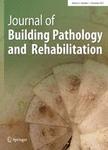版权所有:内蒙古大学图书馆 技术提供:维普资讯• 智图
内蒙古自治区呼和浩特市赛罕区大学西街235号 邮编: 010021

作者机构:Department of Civil Engineering Siddharth Institute of Engineering & Technology Puttur India
出 版 物:《Journal of Building Pathology and Rehabilitation》 (J. Build. Pathol. Rehabilit.)
年 卷 期:2023年第8卷第1期
页 面:1-14页
主 题:Durable properties Ground granulated blast-furnace slag Particle size distribution Scrap tyre rubber powder Silica fume
摘 要:Concrete is an artificial matrix with water, cement, and fine and coarse aggregates. Adding mineral admixtures and waste materials to concrete has evolved into a spectacular achievement nowadays. The current investigation replaces cement with mineral admixtures such as silica fume (SF) and ground granulated blast-furnace slag (GGBS). Scrap Tyre Rubber Powder (STRP) and Bambara Nut Shell Ash (BNSA) are two regionally significant waste materials used to replace fine aggregates. The workability, strength, and durability of M25 grade concrete were determined using concrete specimens at a constant replacement of cement by 10% of SF and 20% of GGBS, and fine aggregate partial replacement at 5%, 10%, 15%, and 20% of STRP and BNSA. The workability of green concrete, compressive, flexural, and splitting tensile strengths at 7, 14, and 28 days of curing and durability (sulphate attack) at 90 days of curing were conducted and correlated with conventional concrete. Test results showed the concrete performed better at partially replacing the cement with 30% admixture (SF-GGBS) and fine aggregate with 15% waste material (STRP-BNSA). The workability improved by 12.24% (slump) and 8.89% (compaction factor), and the gain in concrete strength at 28 days was 21.04% (compressive) and 18.34% (splitting tensile) than conventional mix. © 2022, The Author(s), under exclusive licence to Springer Nature Switzerland AG.